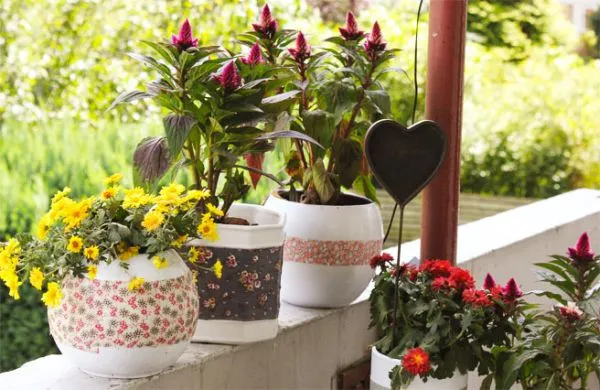All houseplants are open-ground plants of different countries of the world, which bloomed and developed, reproduced in their ideal natural and climatic conditions. In order to admire the beauty of their flowers you need to know if they love the sun, moisture, what soil they need.
That is, the care of houseplants should be as close as possible to the conditions in which they lived before, only then will the plants please you with healthy leaves and beautiful flowers.
Plants in nature fully meet their needs with the help of natural resources. Those plants that have been torn from the wild and transplanted into pots are completely and always dependent on human care. Of course, there are many hybrids more adapted to room conditions.
Secrets of caring for houseplants
The secret of success in the care of houseplants is the creation of ideal environmental conditions similar to their natural. Each plant needs an individual approach: earth, water, light, humidity, nutrients.
What kind of light is needed when caring for houseplants
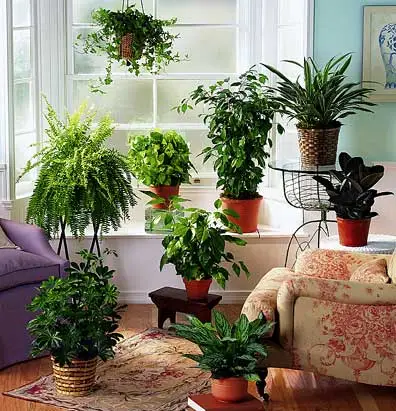
Як знайти ідеальне місце для своєї рослини? Що таке сонячне місце – місце, де кілька годин світить сонце, південна або південно-західна сторона будинку. Часткове затінення – це місце, де ранкове або вечірнє сонце світить в кімнаті протягом декількох годин. Затінене – це місце близько двох метрів від сонячної сторони, яке не піддається впливу сонячних променів (коридори, сходи, кути кімнат).
How to find out if the plant is in a good place?
Signs of insufficient sunlight:
- elongation of shoots towards light (thin and long)
- new leaves grow smaller than the previous ones
- the lower leaves turn yellow and fall off
- the plant does not grow, or growth has stopped
- flowering does not bloom, or blooms poorly
- the colors on the leaves disappear
Signs of excess sunlight:
- burnt spots on the leaves
- the leaves look faded
- the leaves become dry and fall off
- the earth dries up quickly
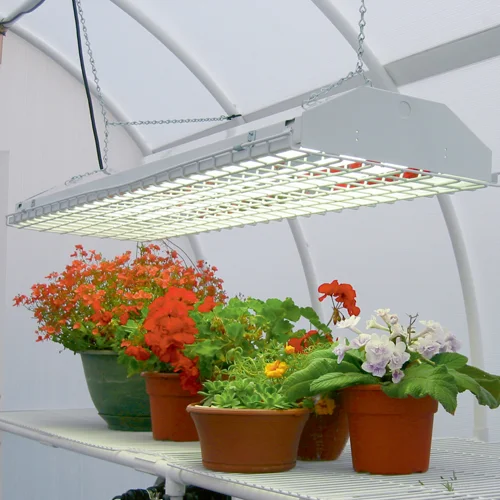
When there is not enough sunlight, it can be replaced with artificial. Such light can complement the natural daylight or even replace it during the long gloomy winter months. For example, white carries all the colors of the rainbow.
Plants need cool light, blue and purple shades of the spectrum – for leaves, warm red and orange – for flowering. But the plant does not need green and yellow light.
Fluorescent lamps are effective because they provide the type of light (blue and red parts of the spectrum) that plants need for photosynthesis.
Which plants are best for artificial light? Many flowering houseplants come to mind because they need bright light to bloom: begonias, bromeliads, African violets, orchids, cyclamen and others. However, many deciduous plants can also look good and beautiful under artificial lighting.
The time of artificial lighting depends on the type of plant. The leaves of plants need about 14-16 hours of light a day. Flowering plants need 12-16 hours of light a day. Darkness is also important for plant growth – 8 hours in complete darkness. Make sure the light is on at the same time each day.
Soil for houseplants
How to choose soil for the plant? At present, this is not a big problem, because you can buy in garden centers, flower shops, various packages of mixtures for houseplants. You need to choose the soil by plant type: for flowering, for greens, orchids, azaleas, cacti and others.
They all differ in structure, acidity, nutritional value. Of course, you can use the soil from the garden, but it must be sterilized (in a hot oven for 40 minutes or frozen for 10 hours) and added in proportions: 2 liters of soil + 2/3 glass of vermiculite + 1 glass of perlite + 1 glass of sphagnum + 0.5 glass of crushed charcoal.

Vermiculite – increases soil acidity, provides air exchange and oxygen penetration to the roots.
Perlite is an almost neutral material. Rock of volcanic origin. It is added to the soil up to 30%, making the mixture lighter, breathable, loose, which prevents soil compaction. Due to these properties, plants have a well-developed root system and air circulation is not disturbed.
In the joint use of vermiculite and perlite compensate for each other’s shortcomings. Be sure to rinse with hot water before use.
Sphagnum (dried moss) – has antibacterial and disinfectant and antifungal properties, thanks to the antifungal substance makes the soil lighter and breathable.
Chopped charcoal is a good antiseptic, it prevents rot and fermentation of the soil, as well as absorbs salts and improves soil structure.
The use of charcoal reduces the risk of bacterial diseases of the root system of the plant.
In the composition of the soil, you can also use more or less components, the main thing that the substrate was breathable, moisture-resistant and loose.
Vermiculite, perlite and drainage can be purchased at professional seed stores, sphagnum at flower shops, charcoal at gas stations, or made yourself.
Caring for houseplants – how to water
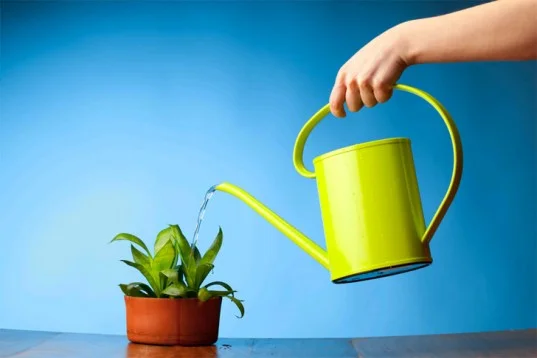
Watering houseplants, at first glance, is easy, but improper watering can destroy them. Our tips will help keep your plants healthy.
So how much do you need to water a houseplant? The answer – depends on the type of plant and its native environment, soil, temperature, period of growth or dormancy, light and humidity in the house or apartment. Also depends on the size and number of leaves, the size of the pot.
How to know when a plant needs watering? There are several proven ways: if the surface of the soil in the pot resembles dust, the color of the soil is gray, the weight of the pot is much lighter – you need to water. It is better to use settled or boiled or filtered water (soft). When watering, make sure that the plant is thoroughly watered and excess water leaked from the drainage hole (excessively wet soil does not get oxygen to the roots, it suffocates the roots, which leads to rot), if the water leaks very quickly, leave it in a plate for 30 minutes and pour out the rest. Allow to dry for a few days and water again.
Humidity of air when caring for houseplants
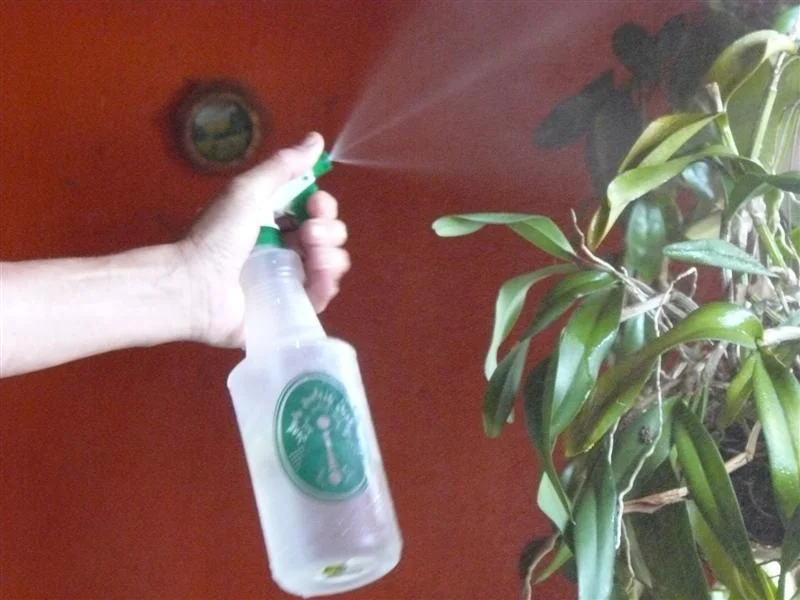
How to increase humidity for houseplants? Many houseplants prefer higher humidity than those in the house, especially in winter. Tropical plants feel best at a relative humidity of about 50-60% – much higher than in many homes.
Ways to increase humidity:
- Humidifier. Good for humidifying one room. Place the humidifier close enough to your plants
- Spraying works well only when you spray the pot several times a day, because moisture evaporates quickly
- Place the container on a tray filled with pebbles. The container should be filled with enough water so that the top half of the pebbles and the pot itself remain dry. The water will evaporate, increasing the humidity in the air around the leaves of the plant
- Grouping of plants
Here are some signs of excessive humidity:
- рослина в’яне
- краї листя стають сухими
- квіткові бруньки розвиваються погано або в’януть відразу після цвітіння
Fertilizers for houseplants
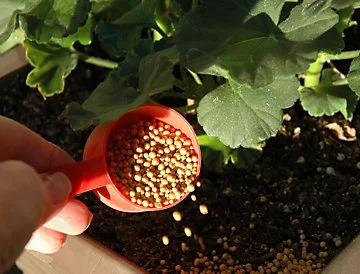
If light gives plants the energy they need and fertilizers provide nutrients, plants should grow healthy and strong.
How to choose fertilizer for houseplants? Fertilizers should also be selected according to the type of plant. Read the label carefully. As a rule, fertilizers are the main nutrients: nitrogen, phosphorus and potassium.
The effect of nutrients on the plant:
- Nitrogen – the leaves of the plant become lush and green, promotes growth
- Phosphorus – the roots become strong and healthy, stimulates flowering
- Potassium – makes stems strong and helps fight disease
Fertilizers specifically designed for flowering plants contain less nitrogen and more phosphorus and potassium.
You can even find fertilizers for specific plants. Most houseplants need balanced fertilizers.
In addition to nitrogen, phosphorus and potassium, plants need, in small quantities, other nutrients or trace elements – the so-called micronutrients. Houseplants that have not been transplanted for a long time need fertilizer to replenish the supply of micronutrients.
There are several types of fertilizers:
- Water-soluble fertilizers are the most common and easy to use. You will find them in the form of liquid, powder or crystals
- Long-acting granules are easy to use, because it is enough to just sprinkle them on top of the soil and they will dissolve during watering
- Fertilizer with sticks – works the same way as granules, but inserted into the soil. You need to push deep enough into the soil near the edge of the pot so as not to damage the roots of plants
- Although most roots are responsible for absorbing nutrients, leaves can also absorb them. Feeding is one of the fastest ways to revive a plant that has been deprived of nutrients
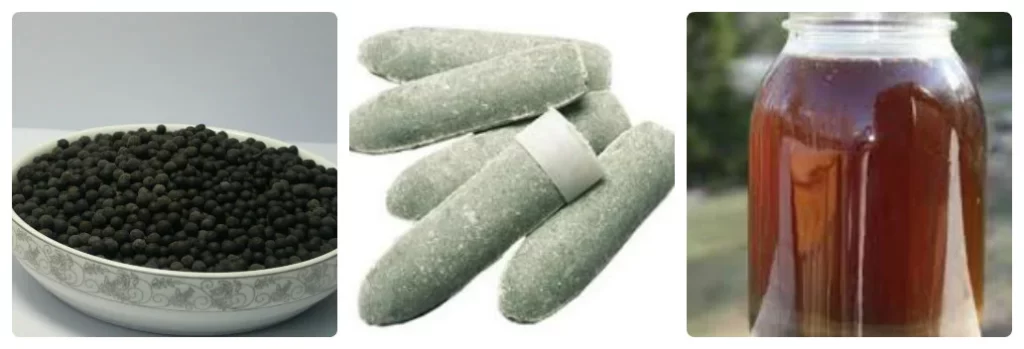
When to feed. Here are some tips:
- weak growth of new leaves
- pale leaves
- fallen leaves
- weak stems
- little flowers
Too much is unhealthy.
Many gardeners mistakenly believe that the more you feed, the better. Plants often suffer from an excessive amount of fertilizer rather than a lack of it. Excess fertilizer can burn roots and leaves. If in doubt, use less fertilizer. Fertilizers should be used once every two weeks, not more often.
There are also exceptions to the rule when it is strictly forbidden to feed plants:
- after purchase (the plant needs to adapt a month or two to adapt to the new environment)
- before and after transplantation
- never feed a plant that suffers from root damage, disease or insects
- in the period of rest

